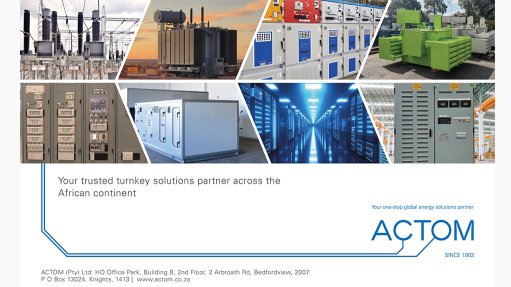Growth forecast for sub-Sahara
Last week, I took issue with African institutions’ not-so-golden silence while rogue governments on the continent ride rough-shod over their citizens. One of the examples I mentioned was the Democratic Republic of Congo (DRC), where Presidential and Parliamentary elections were held at the end of last month – more than two years after the expiration of the second and final term of the outgoing President. There was no robust admonition at all from the regional bloc, the Southern African Development Community (SADC), and that’s what triggered the tirade from yours truly.
But I erred – I took aim at President Cyril Ramaphosa, charging that, as the current chairperson of the SADC, he should be seen to be doing something about the worrying developments around the DRC elections. Well, he is no longer the SADC chairperson, having handed over the baton to his Namibian counterpart, Hage Geingob, in August.
We now know that an opposition candidate whom nobody gave a chance has been provisionally declared the winner of the DRC elections and that the fellow presumed by many to have garnered the most votes has rejected that result and petitioned the country’s constitutional court for a recount. He has the backing of the country’s powerful Catholic Church, which deployed about 40 000 observers, to ensure every polling station was covered. The church insists the petitioner won 61% of the votes, and not the 34% announced by the electoral commission.
And what has been the SADC’s response? I have read media reports suggesting the bloc would prefer a negotiated settlement, culminating in a government of national unity, a position Ramaphosa apparently supports. But why settle for that when it should be possible to establish who the real winner is? It’s quite depressing.
But more positive news for us in sub- Saharan Africa came through earlier this month – from the World Bank, which forecasts in its ‘Global Economic Prospects’ report that the region is poised to post gross domestic product growth of 3.4% this year and 3.7% in 2020 to 2021 as improving policy certainty helps support a cyclical rebound in the three largest economies – Angola, Nigeria and South Africa – all of which are resource intensive. Continued robust growth in non-resource- intensive countries is also expected to fuel overall growth.
The forecast compares with growth of only 2.7% last year, which was a marginal improvement from 2.6% in 2017, with the muted growth over the past two years largely attributable to sluggish expansion in the top three economies.
There are risks to the World Bank’s outlook, however. On the external front, these include slower-than-projected growth in China and the Eurozone – both of which have strong trade and investment links with sub-Saharan Africa – which could stifle export demand and investment inflows from these regions.
The World Bank also warns that the escalating trade tensions between China and the US could have a huge detrimental effect on metal commodity producers – including those from sub-Saharan Africa – in the form of weakening demand from the Asian giant. Further, a faster-than-expected normalisation of advanced-economy monetary policy could result in sharp reductions in capital inflows, higher financing costs and disorderly exchange rate depreciations, especially in countries with weaker fundamentals or higher political risks.
The Bretton Woods institution also stresses that in those countries that will be holding elections this year, domestic political considerations could undermine the commitment needed to rein in fiscal deficits or implement structural reforms, especially where public debt levels are high or rising.
The countries that will be going to the polls this year include two of Africa’s giants: our own Mzansi, where Ramaphosa will be hoping to maintain the ruling African National Congress’s support above 60%, and Nigeria.
So, I hope sub-Saharan African economies grow as per the World Bank’s projection and that the suffering of the people of the DRC eventually comes to an end. Although the country gained independence in 1960, for the Congolese, it has been a question of ‘Not Yet Uhuru’.
Article Enquiry
Email Article
Save Article
Feedback
To advertise email advertising@creamermedia.co.za or click here
Comments
Press Office
Announcements
What's On
Subscribe to improve your user experience...
Option 1 (equivalent of R125 a month):
Receive a weekly copy of Creamer Media's Engineering News & Mining Weekly magazine
(print copy for those in South Africa and e-magazine for those outside of South Africa)
Receive daily email newsletters
Access to full search results
Access archive of magazine back copies
Access to Projects in Progress
Access to ONE Research Report of your choice in PDF format
Option 2 (equivalent of R375 a month):
All benefits from Option 1
PLUS
Access to Creamer Media's Research Channel Africa for ALL Research Reports, in PDF format, on various industrial and mining sectors
including Electricity; Water; Energy Transition; Hydrogen; Roads, Rail and Ports; Coal; Gold; Platinum; Battery Metals; etc.
Already a subscriber?
Forgotten your password?
Receive weekly copy of Creamer Media's Engineering News & Mining Weekly magazine (print copy for those in South Africa and e-magazine for those outside of South Africa)
➕
Recieve daily email newsletters
➕
Access to full search results
➕
Access archive of magazine back copies
➕
Access to Projects in Progress
➕
Access to ONE Research Report of your choice in PDF format
RESEARCH CHANNEL AFRICA
R4500 (equivalent of R375 a month)
SUBSCRIBEAll benefits from Option 1
➕
Access to Creamer Media's Research Channel Africa for ALL Research Reports on various industrial and mining sectors, in PDF format, including on:
Electricity
➕
Water
➕
Energy Transition
➕
Hydrogen
➕
Roads, Rail and Ports
➕
Coal
➕
Gold
➕
Platinum
➕
Battery Metals
➕
etc.
Receive all benefits from Option 1 or Option 2 delivered to numerous people at your company
➕
Multiple User names and Passwords for simultaneous log-ins
➕
Intranet integration access to all in your organisation














